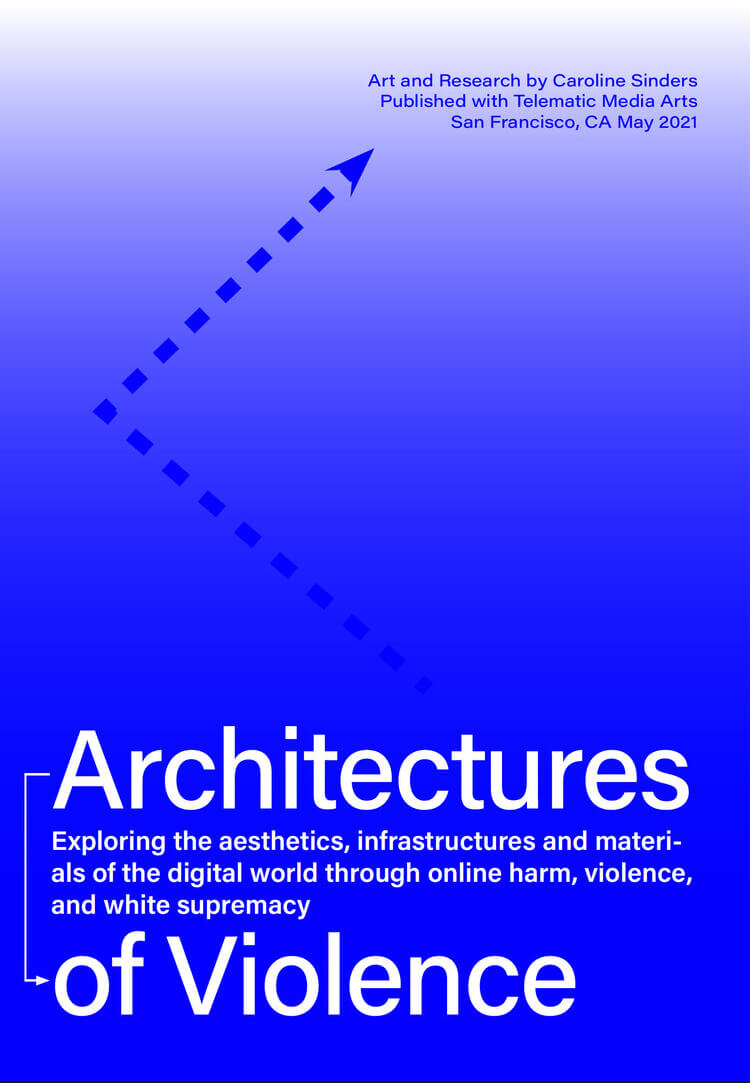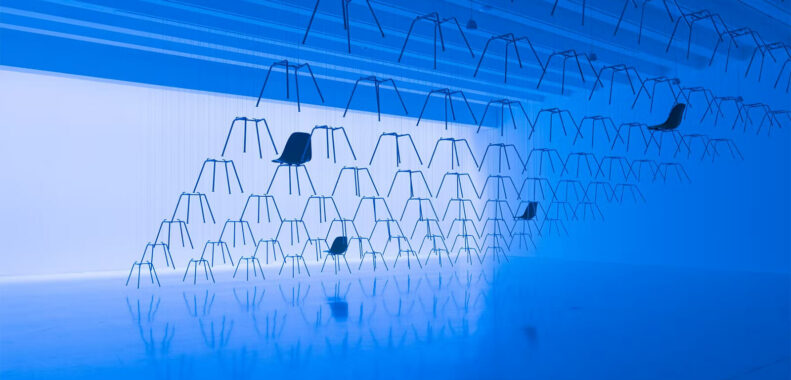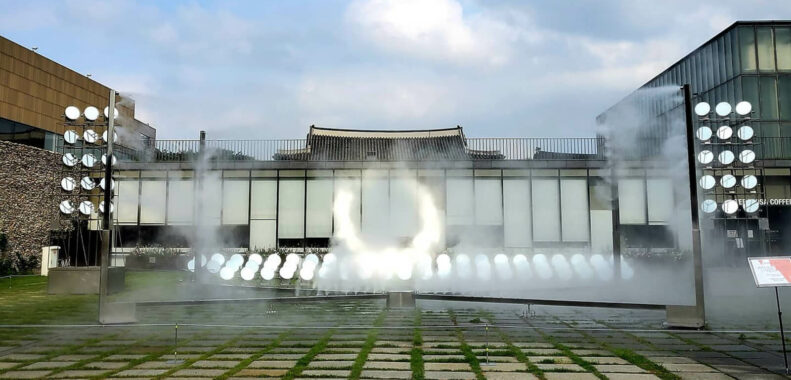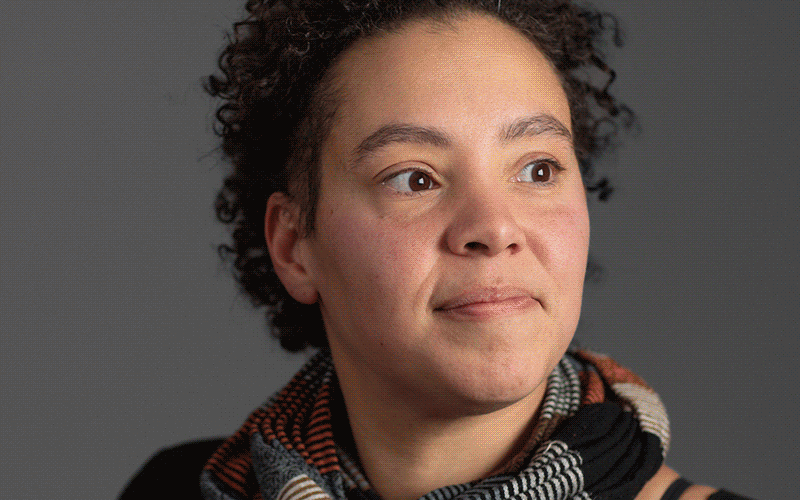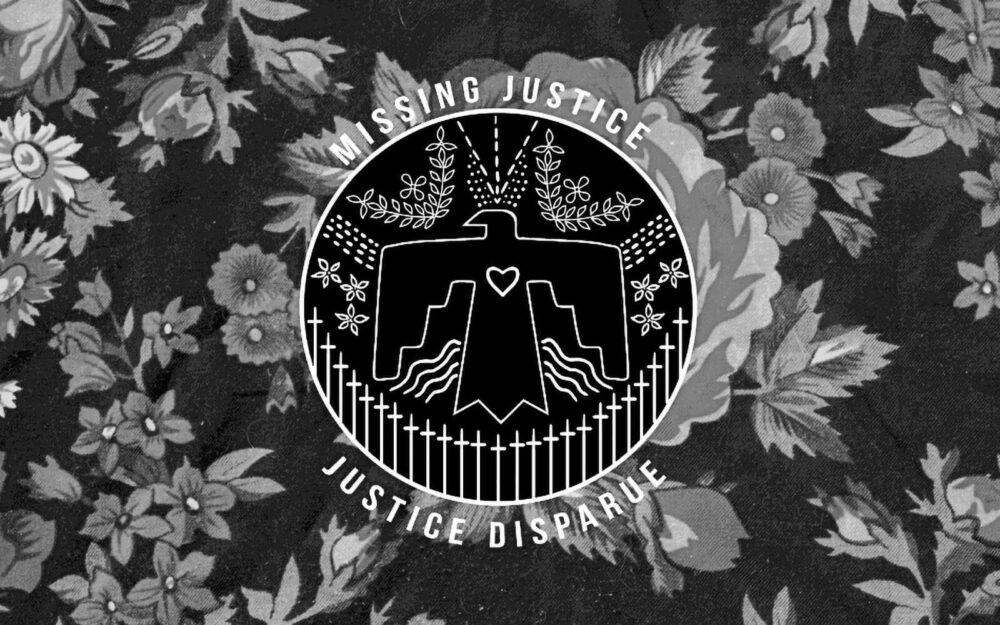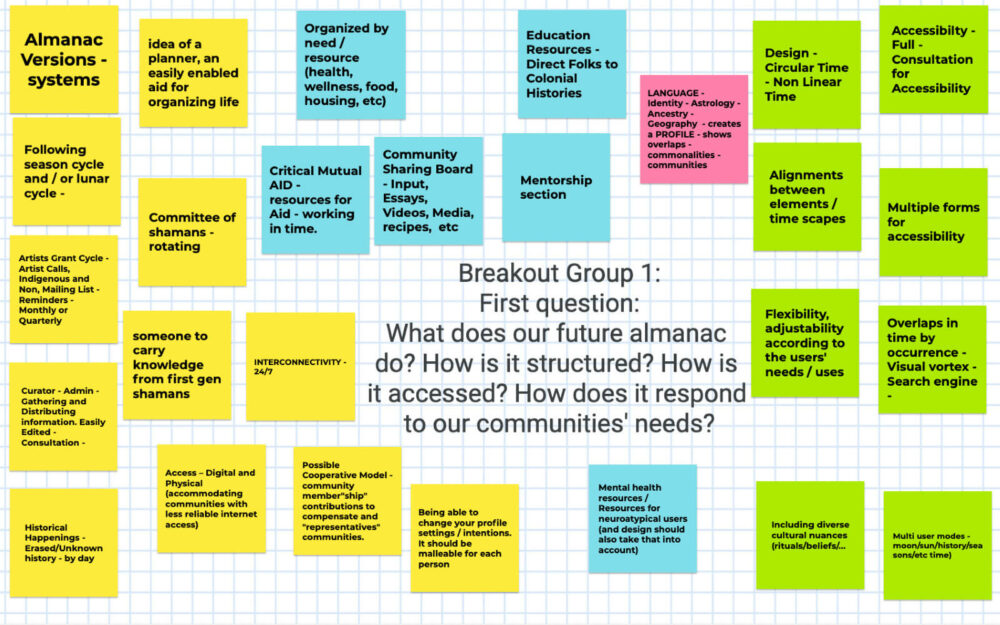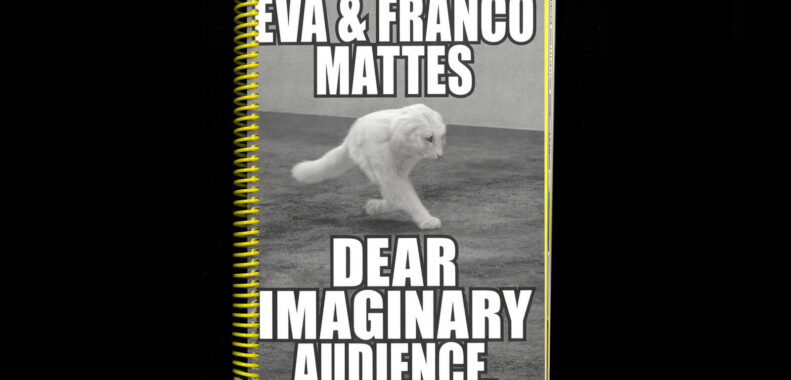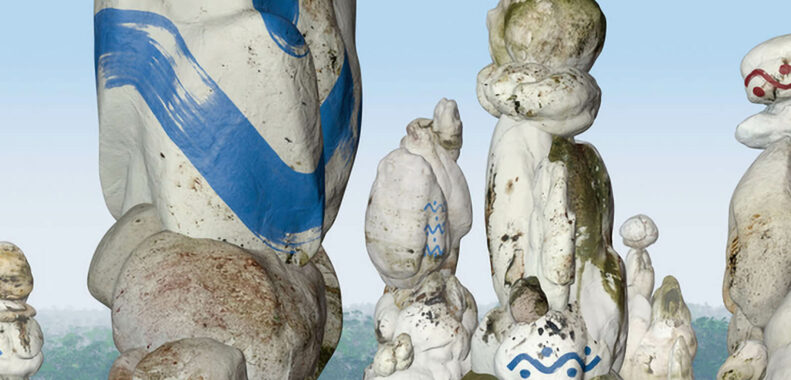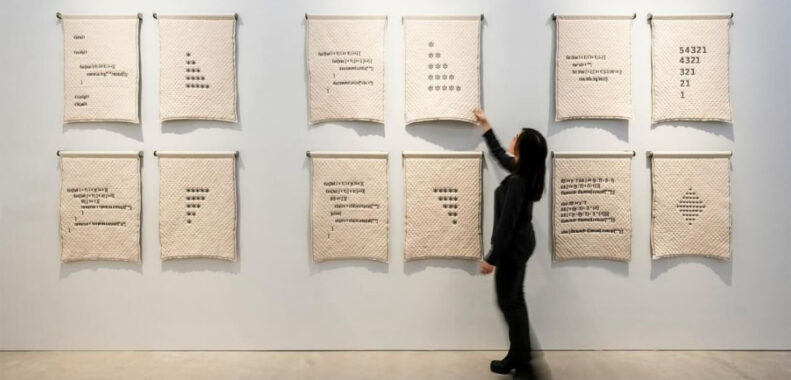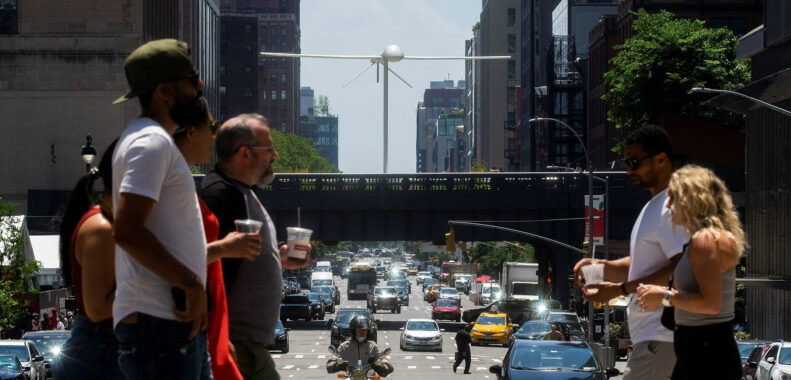All
Curated by Alice Russotti, Meg Webster’s ”Wave” opens at the Upper Gallery at The Arts Center on Governors Island in New York. Beyond environmental studies spanning sound and video like Nearest Virgin Forest (1987) and Waterfall (1996), the solo show includes new pieces (re)engaging foundational Webster motifs including Moss Mound (building on the 1986 work Moss Bed), and Pollinating Garden, for which viewers trek 1 km southwest to a GrowNYC site to take in a durational piece—a plot recently seeded by the artist.
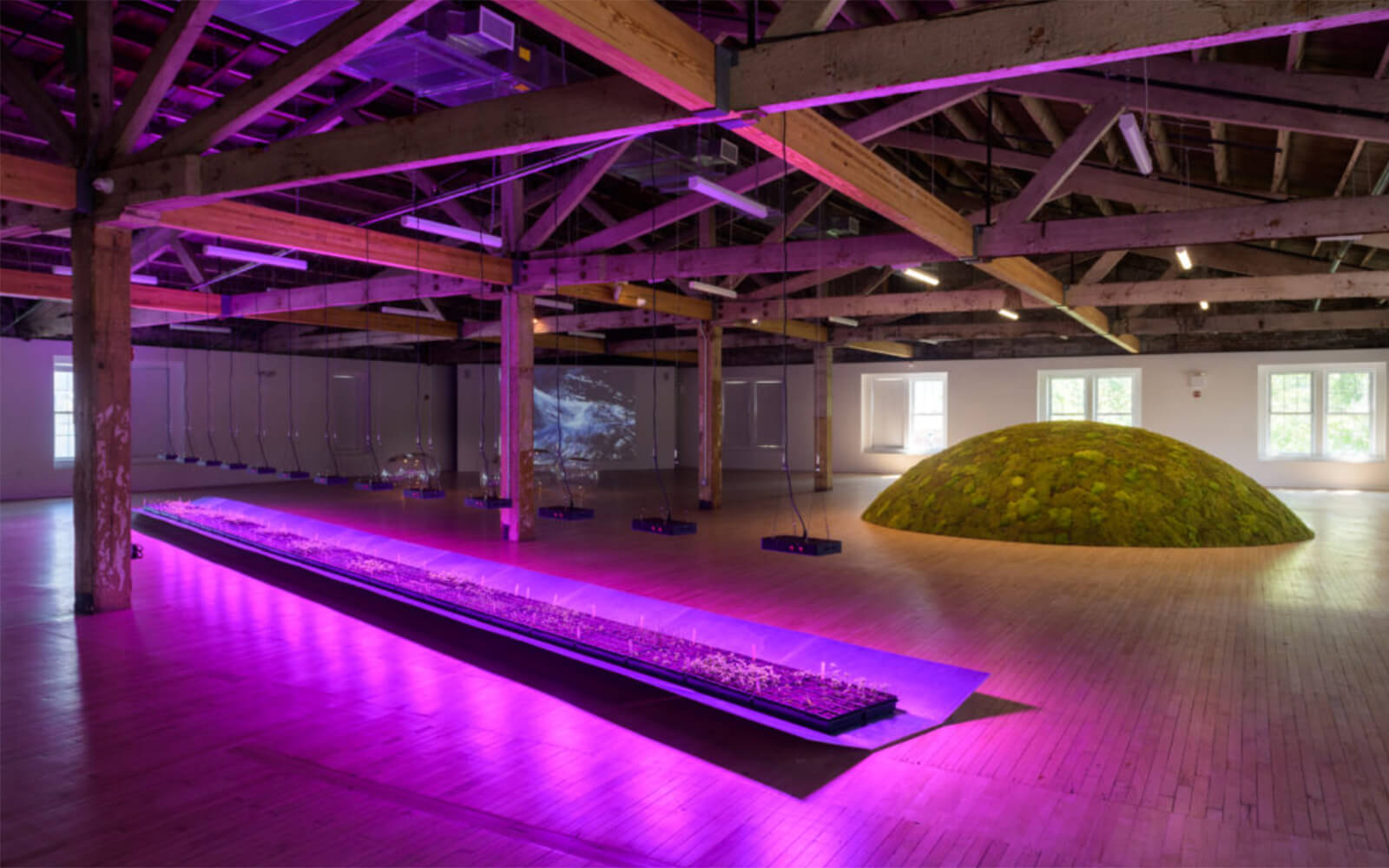
A shrine to IBM’s midcentury corporate aesthetic, Rayyan Tabet’s “Deep Blues” opens at Walker Art Center in Minneapolis. Illuminated by the melancholic glow of IBM’s 10 shades of blue, the installation references Eero Saarinen’s IBM Rochester design and Charles and Ray Eames work for the multinational—a matrix of their chairs hang overhead. Tabet’s nods to IBM’s design patronage coupled with AI-trained text-to-speech narration foreground the affect of knowledge work, and of a singular corporate identity.
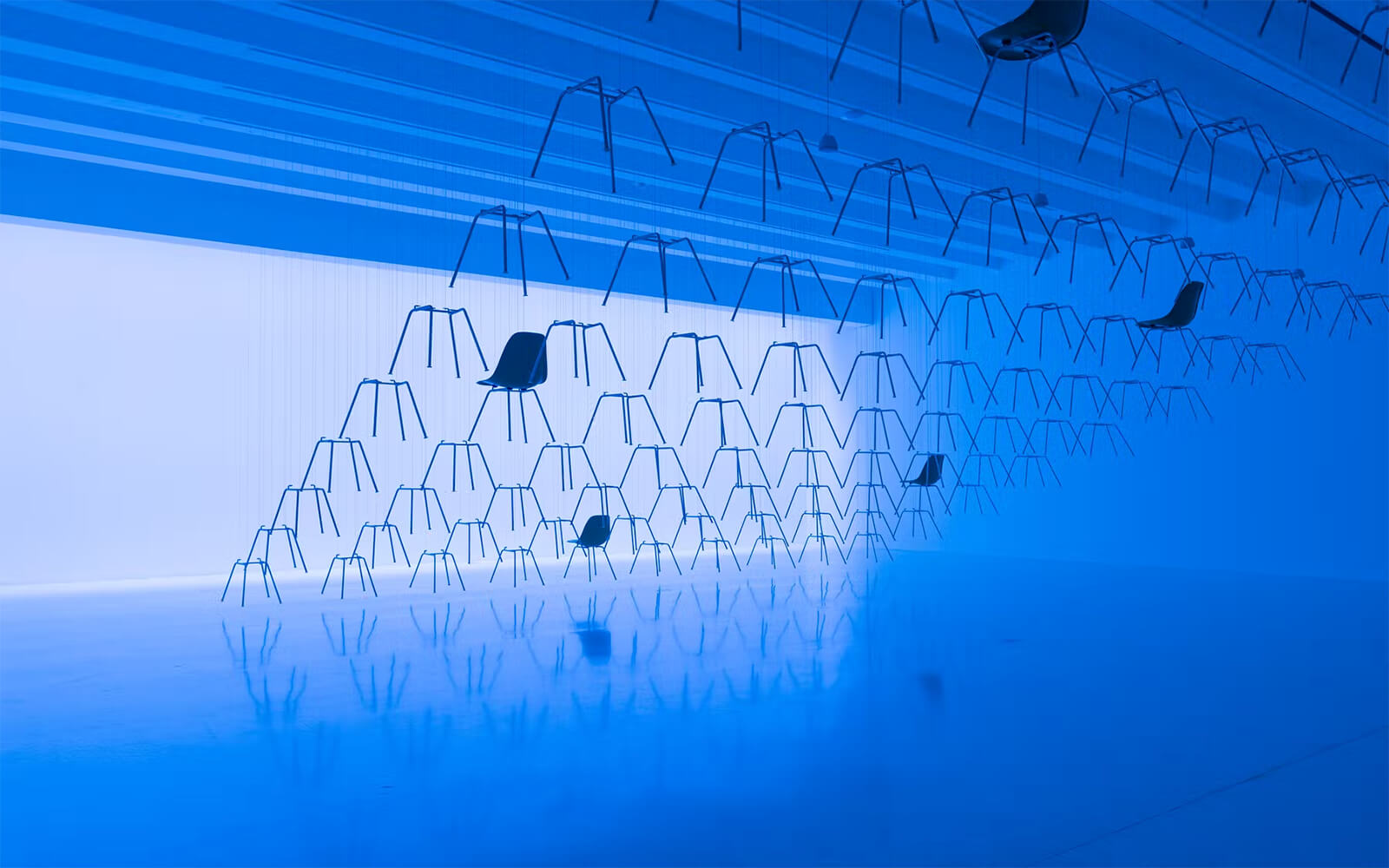
Seoul-based light artists Kimchi and Chips install Halo at the local National Museum of Modern and Contemporary Art (MMCA) as part of the institution’s “Multiverse” marathon. In the piece, 99 robotic mirrors follow the Sun’s movement and focus its light into a glistening halo within a cloud of fine water mist. First shown at London’s Somerset House in 2018, the MMCA edition features a new ‘solar farm’ system that uses machine learning for tracking and calibration.
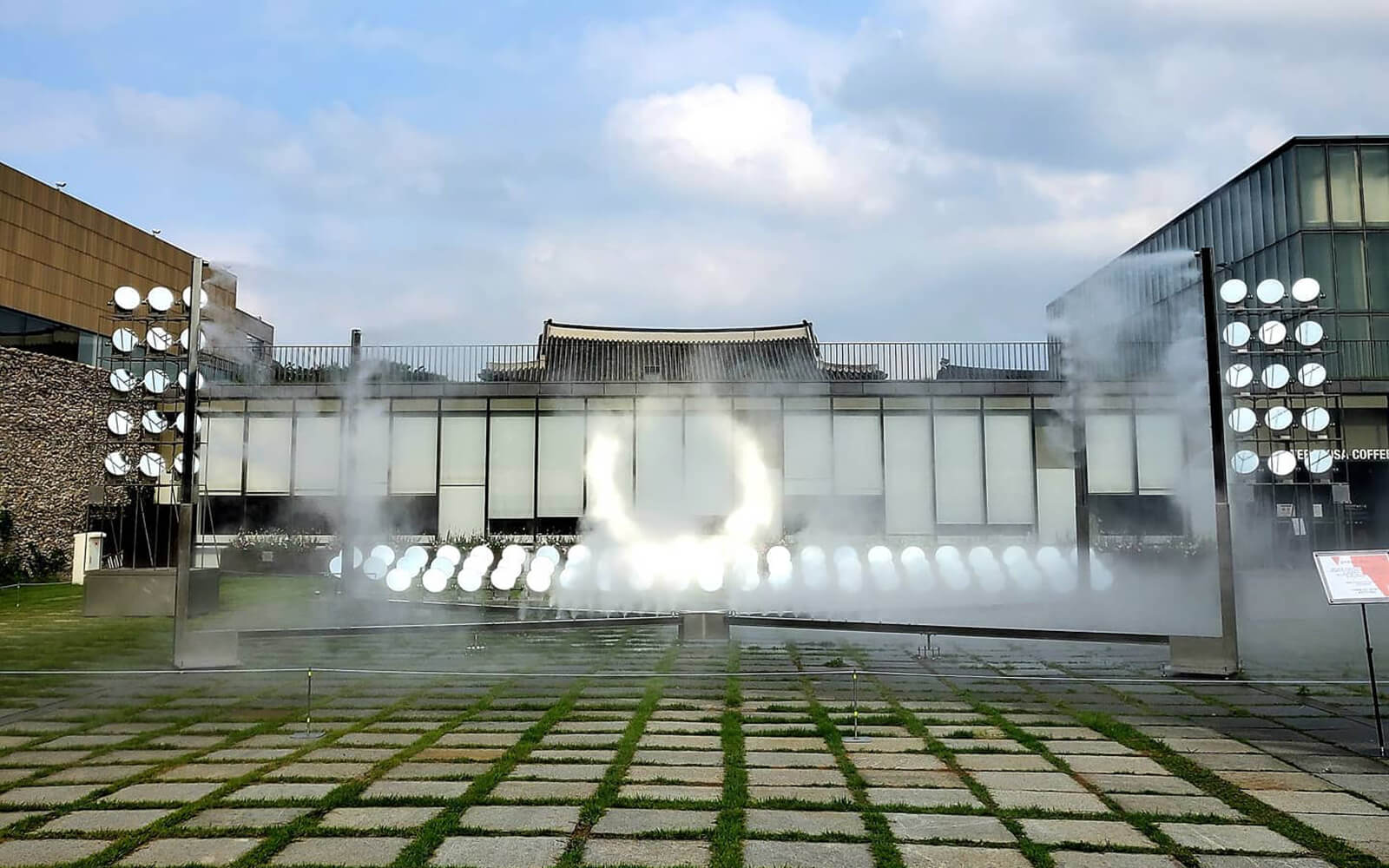
Artengine’s Ryan Stec Speculates About NFT Impacts on Trad Art Market
“Payment terms, usage rights—the things bundled into an NFT were already possible through contracts. Now what’s fascinating to me is the way the NFT hype might force Christie’s to rethink how they handle secondary markets, and for artists to demand residual rights.”
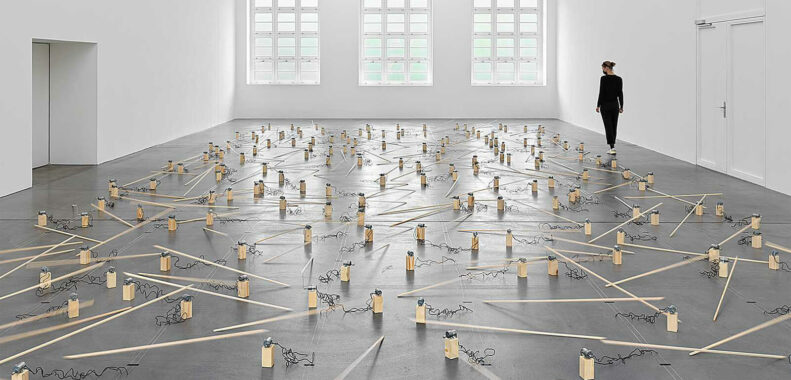
At Haus Konstruktiv, 295 Prepared DC-Motors, 39 Kilograms of Wood, and 825 Cardboard Boxes Whirr Away in Concert
Curated by Sabine Schaschl und Eliza Lips, Bernese sound artist Zimoun opens two immersive installations at Zurich’s Haus Konstruktiv, his biggest solo show in a Swiss museum yet. 295 prepared dc-motors, 39 kg wood and 825 cardboard boxes 35 x 32.5 x 32.5 cm comprise architectural configurations of myriad motorised components of everyday materials. Once activated, they “immerse the observer in a delightful monotony that is repetitive and multifaceted at the same time.”
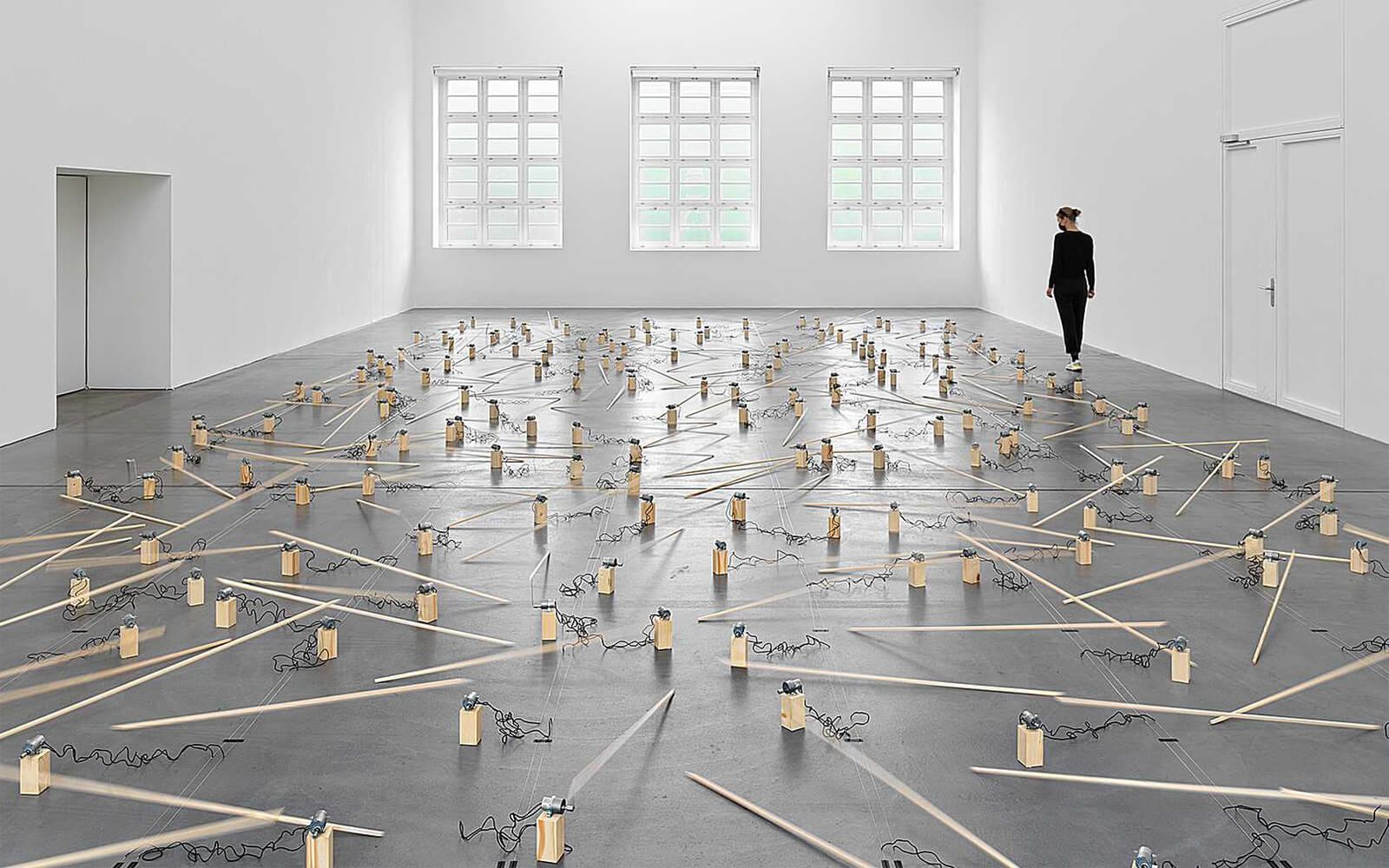
Suzanne Kite on the Importance of Consultation
“You just can’t make decisions without identifying who you and who your mentors are, not necessarily elders, but people who are already doing what you’re doing in a good way, and then you can begin to identify need.”
Most recently shown at “METAMORPHOSIS” at Hyundai Motor Studio Seoul last year, Matthew Biederman’s Serial Mutations (z-axis) v04 (2019) opens at Montreal’s ELEKTRA Gallery. Emerging from the vein of Biederman’s work that pushes at the limits of geometry and perception, it deploys the Necker cube optical illusion as the basis of an indeterminate shifting field that reconfigures itself ad infinitum, outside of perspectival space. Installed in ELEKTRA Gallery’s window vitrine, the animation will be displayed through June 19.
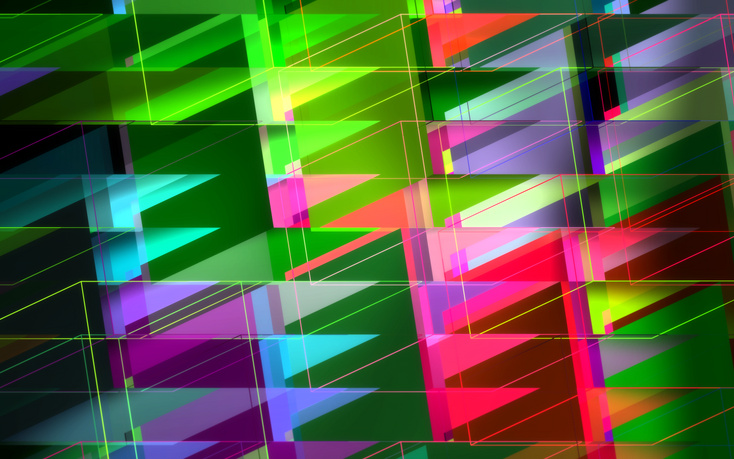
The Artist’s Almanac
DEL Reflection: The Artist’s Almanac
“One of the prompts that Alisha and I give is to ask people to go as far into the future as it takes for them to have their needs met. Some people say ‘in 10 years I’ll have X, Y, and Z.’ For others, it’s ‘in 1,000 years, X, Y, and Z.’ And some say ‘in 10,000 years, after the super volcano erupts and wipes out everything, and reanimates the earth—then we’ll talk.’”
Liner Notes:
In a conversation with Artengine’s Ryan Stec, DEL resident Suzanne Kite describes the thinking and process that informed the Artist’s Almanac. While all DEL projects were impacted by the pandemic, Suzanne’s was transformed by its strains. Pivoting from her initial plan to develop a resource for racialized artists, her almanac became a container for a broader conversation about care and support. In addition to Artengine, she enlisted Concordia University’s Feminist Media Studio and the HTMlles Festival to organize a consultation with a 20 artists and cultural producers.
In the wrap-up interview, she dives deep into her thinking around the telescoping time scales required for healing across generations and how futurity is relative. She also takes care in articulating the difference between research-creation (‘producing’ knowledge) versus consultation with elders or stakeholders, and, more broadly, ruminates on her thinking around how to build bridges of solidarity and support between marginalized communities.
These quotes, notes, and references are highlights from an hour-long conversation that took place between Suzanne and Ryan in Spring 2021. Click through below and watch the full interview.
01 – Facilitators
Suzanne enlisted a team of A-list facilitators to develop the Almanac. Alisha B. Wormsley, Jas M. Morgan, and Lupe Pérez, brought experience in education and community organizing from Afrofuturist, Indigenous, LGBTQ2S+, and design justice circles, to help structure and coordinate the community consultation.
02 – A list of lists
A ‘list of lists’ was compiled to take stock of resources for collective care that were already circulating. In addition to Missing Justice (image), which raises awareness about violence and discrimination against Indigenous women, some of the Almanac references and precedents include Adrienne Huard’s writing, Afronautics Research Lab, Black Feminist Study, CyberFeminism Index, Pirate Care, Queer.Archive.Work, and trans-resist.
03 – The Virtual Whiteboard
Since meeting face-to-face was impossible, workshop participants gathered around virtual whiteboards. Instead of a running headlong into design sprint, they interrogated first principles, asking questions like ‘how does the almanac respond to community needs?’ (image), and ‘what consultation should be done?’
W. Patrick McCray on How Postwar Experiments in Art and Technology Defined Contemporary Aesthetics
“These categories of art and technology and artists and engineers are dynamic, they are historically contingent and change over time. So, sure, you can go into MoMA and see video or a light and sound piece—but in 1965 the context was entirely different, the art world struggled to accept this work.”
Eva & Franco Mattes
Dear Imaginary Audience
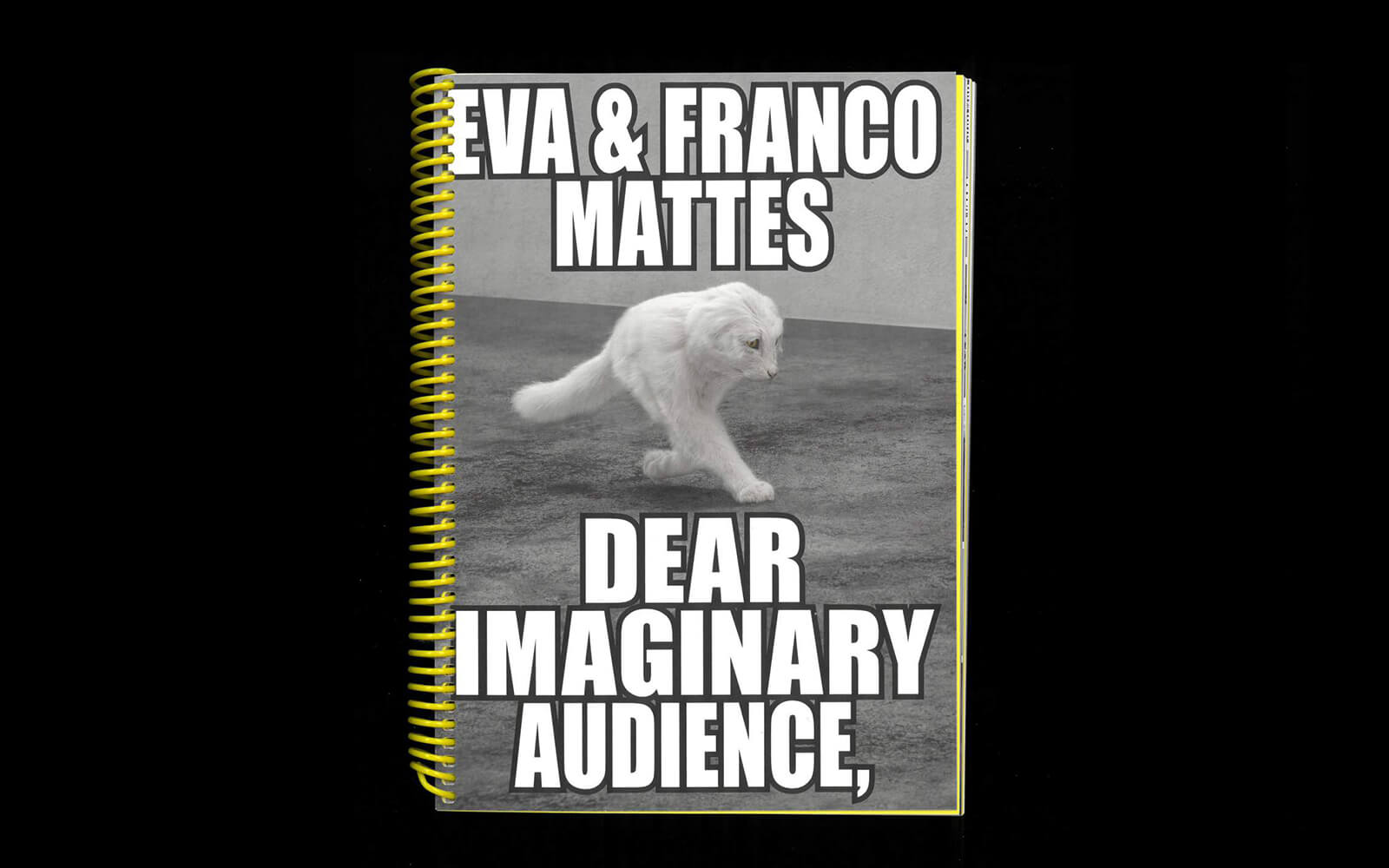
Qianqian Ye on Growing a Creative Coding Community
“Leading p5.js is like tending a garden. The p5 garden is the warm gathering space my younger self imagined, where people are welcomed to meet, chat, learn, and exchange ideas.”
A celebration of “Swiss Media Art,” HeK Basel opens three solo exhibitions presenting new works by Studer/van den Berg, Maria Guta, and Simone C Niquille, all winners of the 2020 Pax Art Award. From Studer/van den Berg’s fictional worlds created in digital space (Palace for an Entity of Unknown Status, image), to Maria Guta’s reflections on identity and self-expression in social media, to Simone C Niquille’s critical engagement with digital datasets, the three artists “address themes that are as diverse as they are essential,” states HeK.
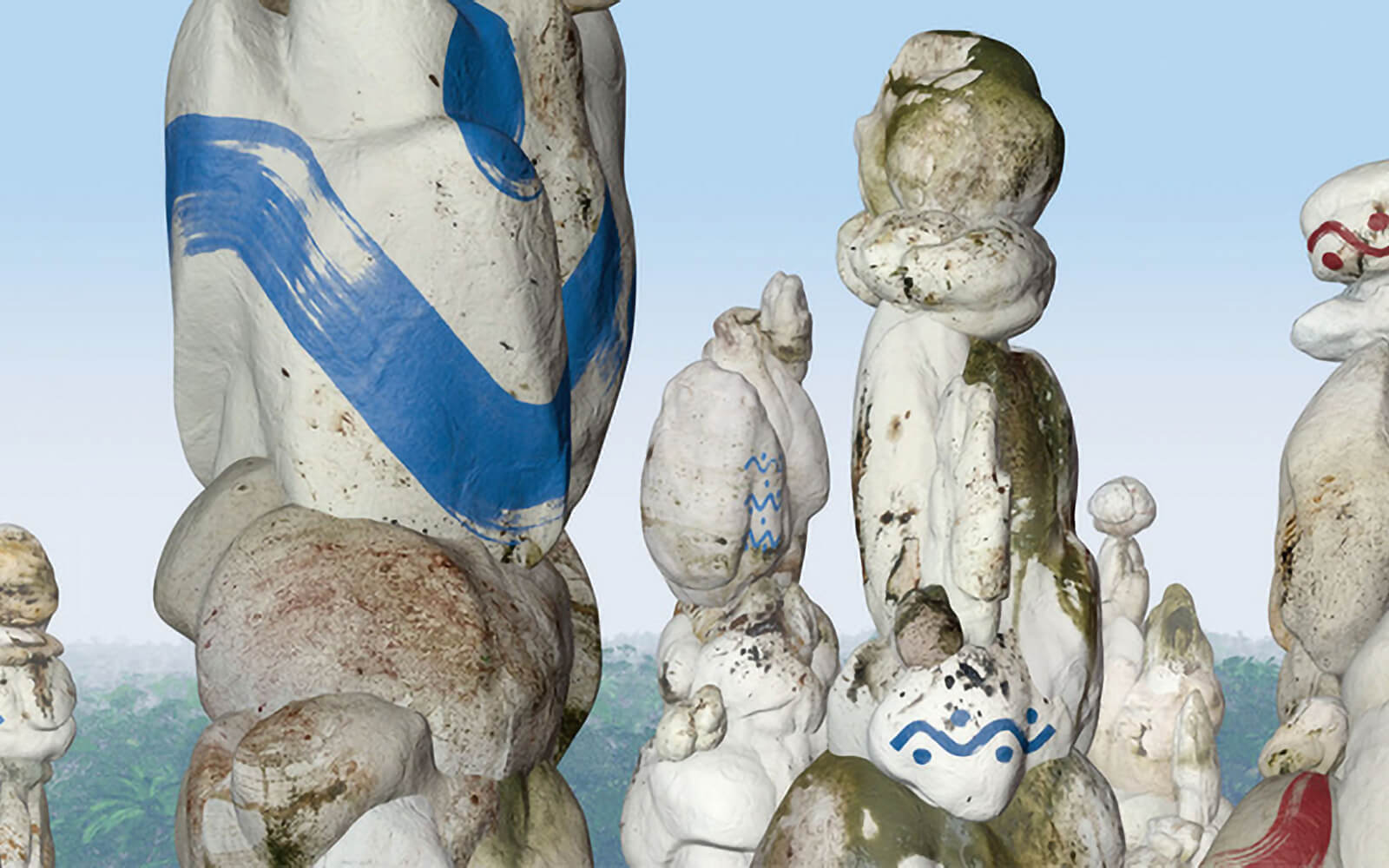
Timothy Morton Considers the Hyper-Pandemic
“It’s the ultimate hyperobject. The hyperobject of our age. It’s literally inside us.”
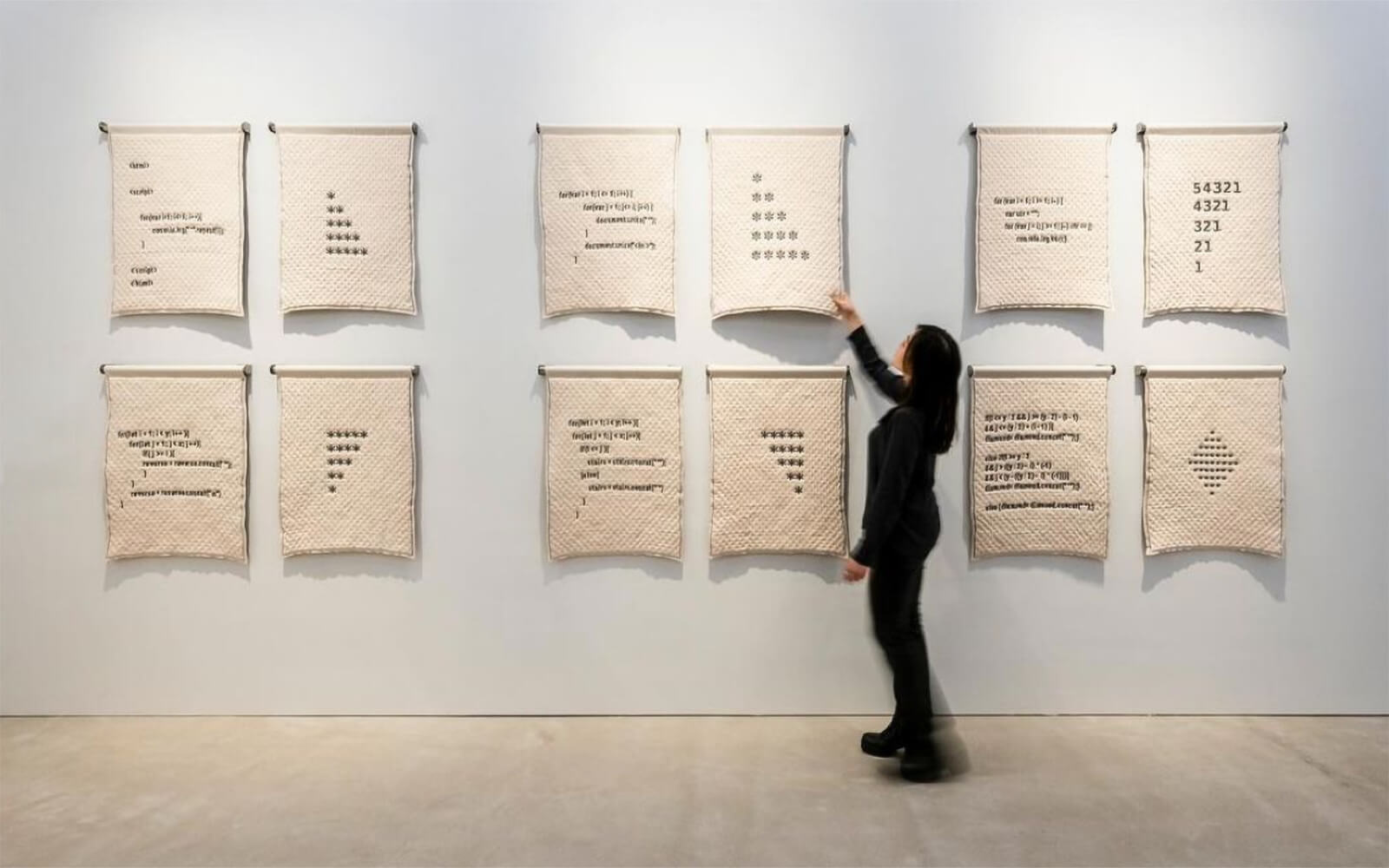
What Really Happened When Google Ousted Timnit Gebru
“The closer the research started getting to search and ads, the more resistance there was. Those are the oldest and most entrenched organizations with the most power.”
Code > Middlemen
“If we can re-create the plumbing of the music industry, then all those middlemen have to compete with code. I would be really scared if I were an incumbent player, because they have no idea what’s coming.”
Sam Durant’s Untitled (drone) goes up at the High Line Plinth, a space for public art in Manhattan’s iconic rail-line park. Sitting atop a 25-foot pole, the life-sized fibreglass sculpture of a Predator drone appears to hover over 10th Avenue, “reminding the public that drones and surveillance are a tragic and pervasive presence in the daily lives of many living outside—and within—the United States,” says Durant. The piece is the second Plinth commission selected from over 50 submissions in 2016. It will be on view through August 2022.
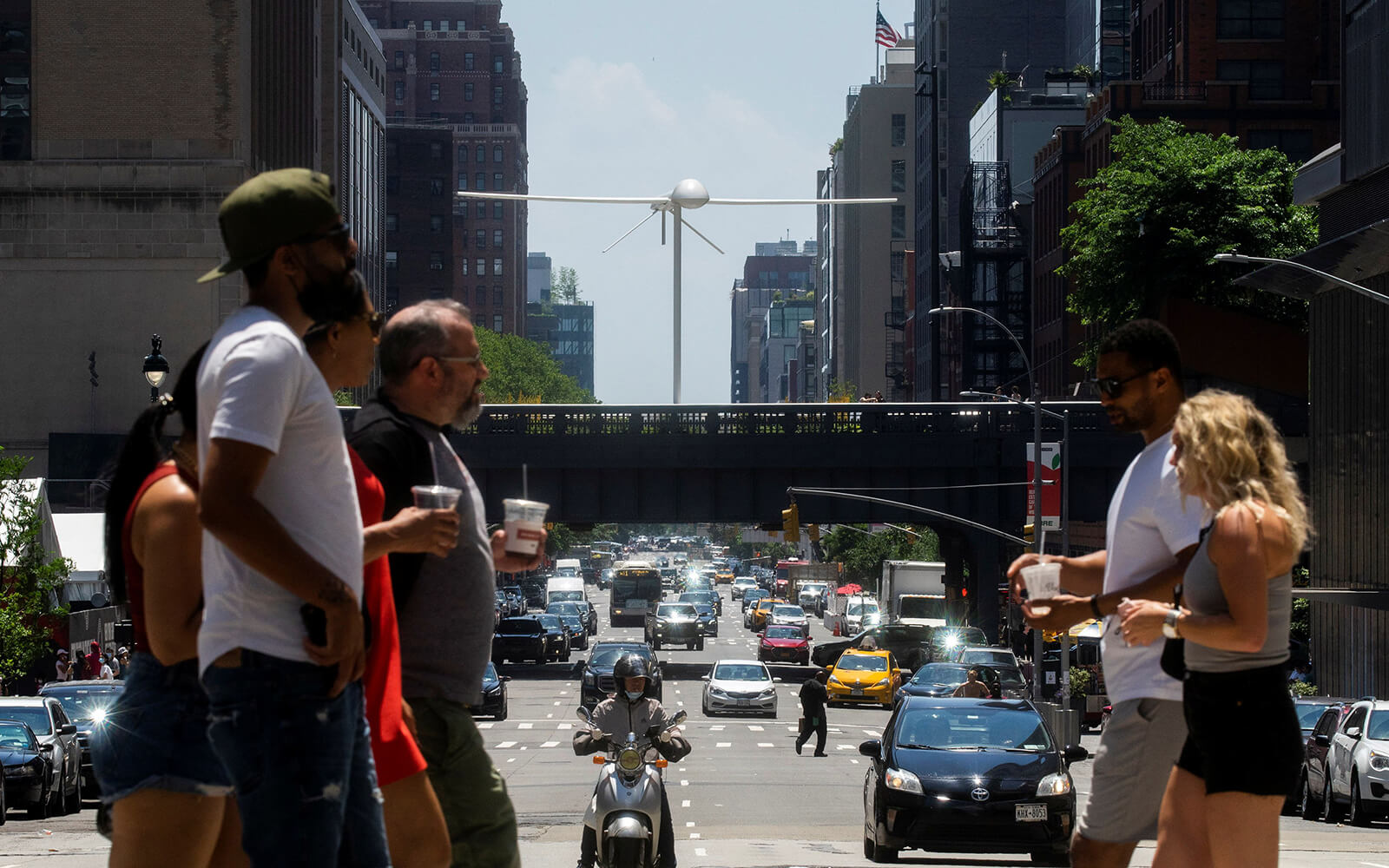
Kate Crawford Links AI and Resource Extraction
“We aren’t used to thinking about these systems in terms of the environmental costs. But saying, ‘Hey, Alexa, order me some toilet rolls,’ invokes into being this chain of extraction, which goes all around the planet.”
Caroline Sinder Deconstructs “Architectures of Violence”
Caroline Sinders
Architectures of Violence
